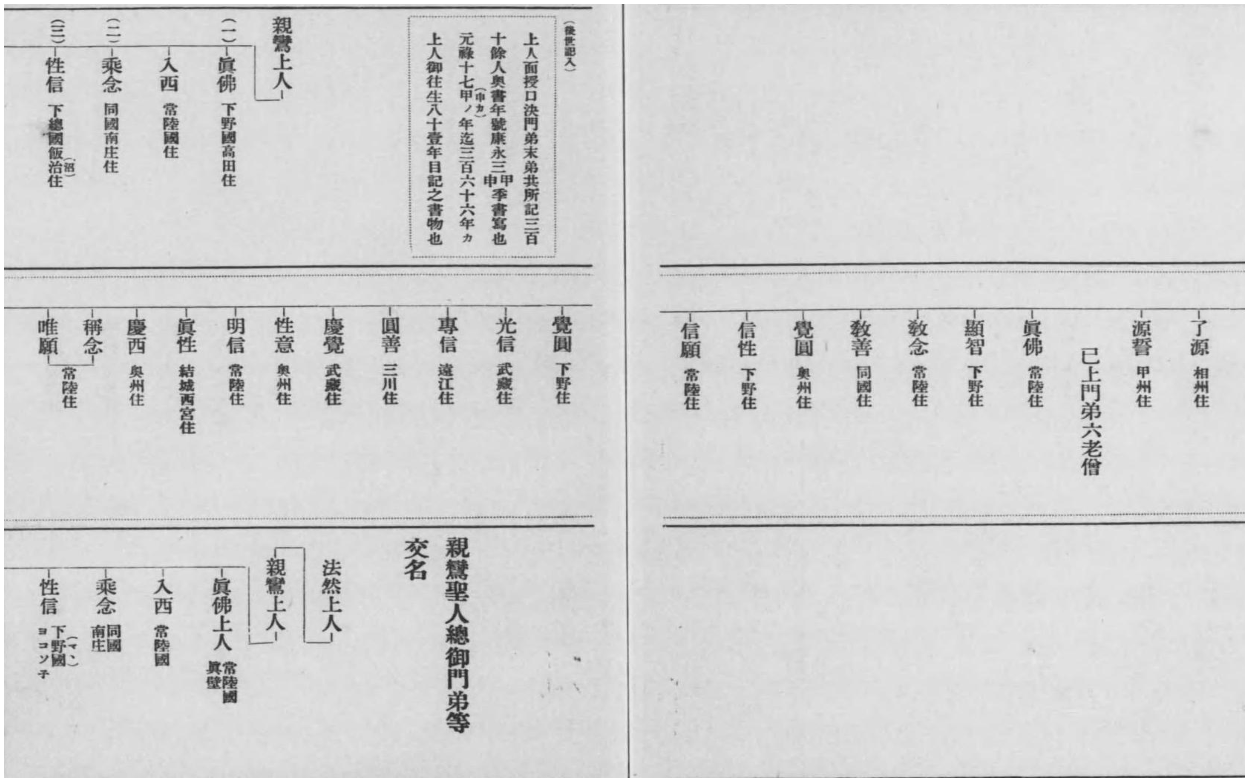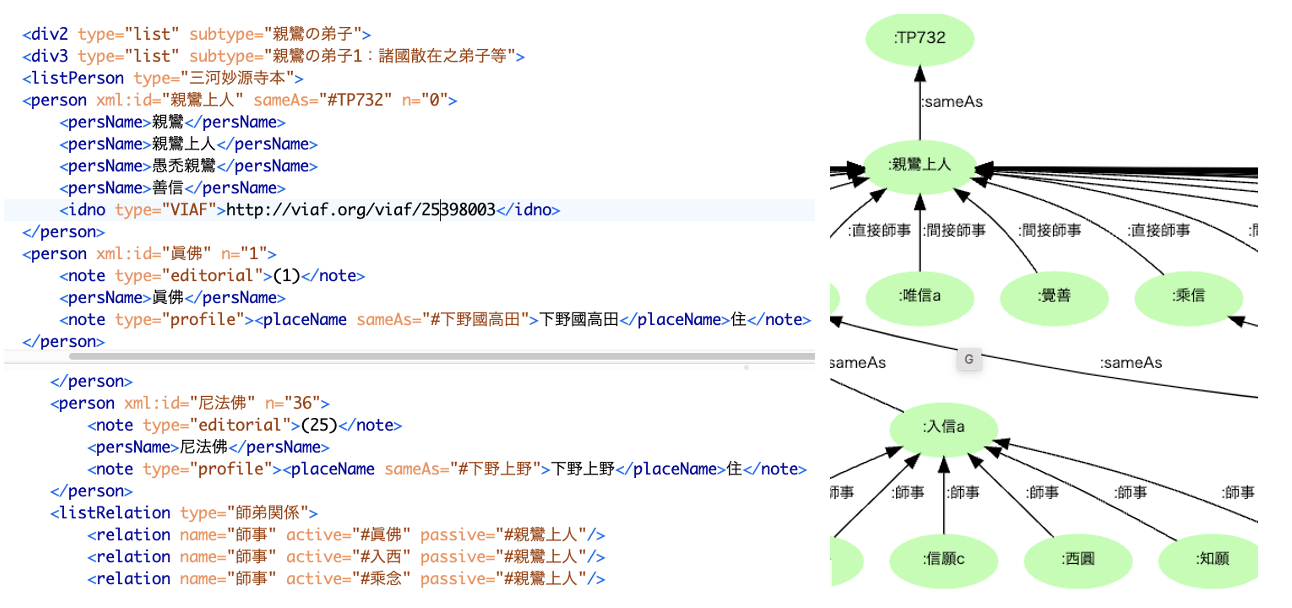Digitizing Buddhist Genealogy: Encoding the Shinran Shonin Montei Kyōmyo-chō
Authors: Sato, Yoshihiro / Nagasaki, Kiyonori / Shimoda, Masahiro
Date: Thursday, 7 September 2023, 2:15pm to 3:45pm
Location: Main Campus, L 2.202 <campus:measure>
Abstract
In this study, we embarked on the task of digitizing the “Kyōmyo-chō” using the Text Encoding Initiative (TEI) markup language. The “Kyōmyo-chō” is a pivotal register of the disciples of Shinran, who was the founder of the Jōdo Shinshū sect of Japanese Buddhism. It chronicles the disciples’ names, residences, and their master-disciple relationships, offering a myriad of unique personal names absent from other sources. This makes it an indispensable foundation for Shinshū studies and for the digitization of materials related to Shinshū Buddhism.
The “Kyōmyo-chō” adopts a genealogical format that traces the lineage from Shinran to his disciples and grand-disciples. This lineage is depicted in the figure below.

Six old manuscripts of “Kyōmyo-chō” exist, raising the question of the optimal text for digitization. We addressed this by encoding the version compiled by Yamada Bunsho in 1917, which integrates three key manuscripts commonly cited in contemporary studies.
We selected Yamada’s 1917 edition due to its absence of copyright restrictions, and its frequent citation in related literature. Although there are other noteworthy editions, their accessibility is limited due to copyright constraints. The three manuscripts incorporated into Yamada’s 1917 edition present various distinct assertions. The primary source of these differences is the later additions by the scribes, who were attempting to tie their own traditions to Shinran. Additionally, minor discrepancies due to scribal errors also contribute to the variations among the manuscripts. Yamada’s 1917 edition demarcates these later insertions with dotted lines, and provides proposed corrections to the scribal inaccuracies found in the manuscripts.
During the markup process of the three texts in Yamada’s 1917 edition, we created separate files for each text. This approach ensured the preservation of their unique interpretations of disciple relationships, influenced in part by various additions. To maintain these unique perspectives, we avoided the use of the parallel-segmentation method.
We adhered to a basic approach in marking up personal names using
the <listPerson> and <persName> tags and each master-disciple relationship
using the <listRelation> and <relation> tags. These <listRelations>,
convertible into RDF format, can then be visualized as a knowledge graph. When a
disciple’s geographical activity was mentioned, we utilized
the <listPlace>, <placeName>, <location>, and geo tags to register the
location information. In ambiguous cases, for instance, when the place name is
too broad or the current location of the place name cannot be identified, we
used the @cert attribute for provisional adjustments. Additionally, we
structured the additional content contained in the manuscripts using <div>
tags. By doing so, we can determine whether a certain name included in these
sections was added at a later time.

Simultaneously, we created a unified file for cross-referencing individual names
during the markup process of the three files. This file incorporates all the
names from the three manuscripts. The person names in the unified file are
referenced to the same person in the three aforementioned files by <@corresp>
attribute as follows.

Whenever a disciple’s name appears in other documents (e.g., Shinran’s letters),
we can annotate it and link it to the xml:id in this unified file. This
approach allows us to reference the mentor-disciple relationships and
geographical activities denoted by each manuscript. Manuscripts not included in
Yamada’s edition can be similarly marked up and added to this unified file at a
later stage.
It is noteworthy that many names featured in the “Kyōmyo-chō” lack external resources such as Wikidata. Future endeavors could involve creating Wikidata entries for these significant names and linking them to the unified reference file used in this research. Such a step would significantly enhance the accessibility and visibility of this crucial historical data.
About the authors
Yoshihiro Sato is a Ph.D. student and a project researcher at the University of Tokyo. His main interest is Indian Buddhism and the biography of the Buddha. And he is also interested in the digitization of Jodo Shinshu scriptures. He is also involved in the TEI encoding of Buddhist Chinese texts in the SAT database under Prof. Shimoda.
Kiyonori Nagasaki, Ph.D., is a senior fellow at the International Institute for Digital Humanities in Tokyo. His main research interest is developing digital frameworks for collaboration in Buddhist studies. He is also investigating the significance of digital methodology in the Humanities and promoting DH activities in Japan.
Masahiro Shimoda, Ph.D., is a former professor at the University of Tokyo, and a professor at Musashino University. He studies the formation process of Mahayana Buddhist scriptures and is also leading a project to build and develop the database of Buddhist Chinese texts (SAT).
Contribution Type
Keywords